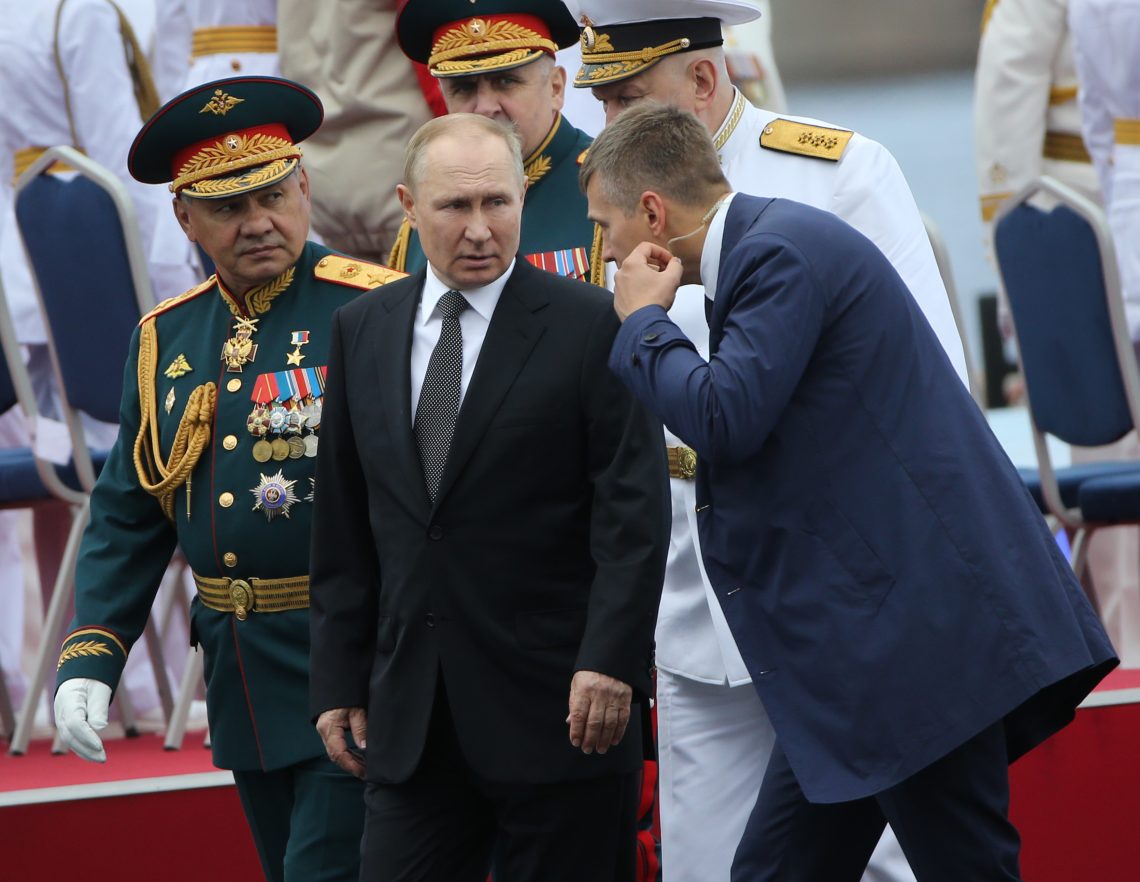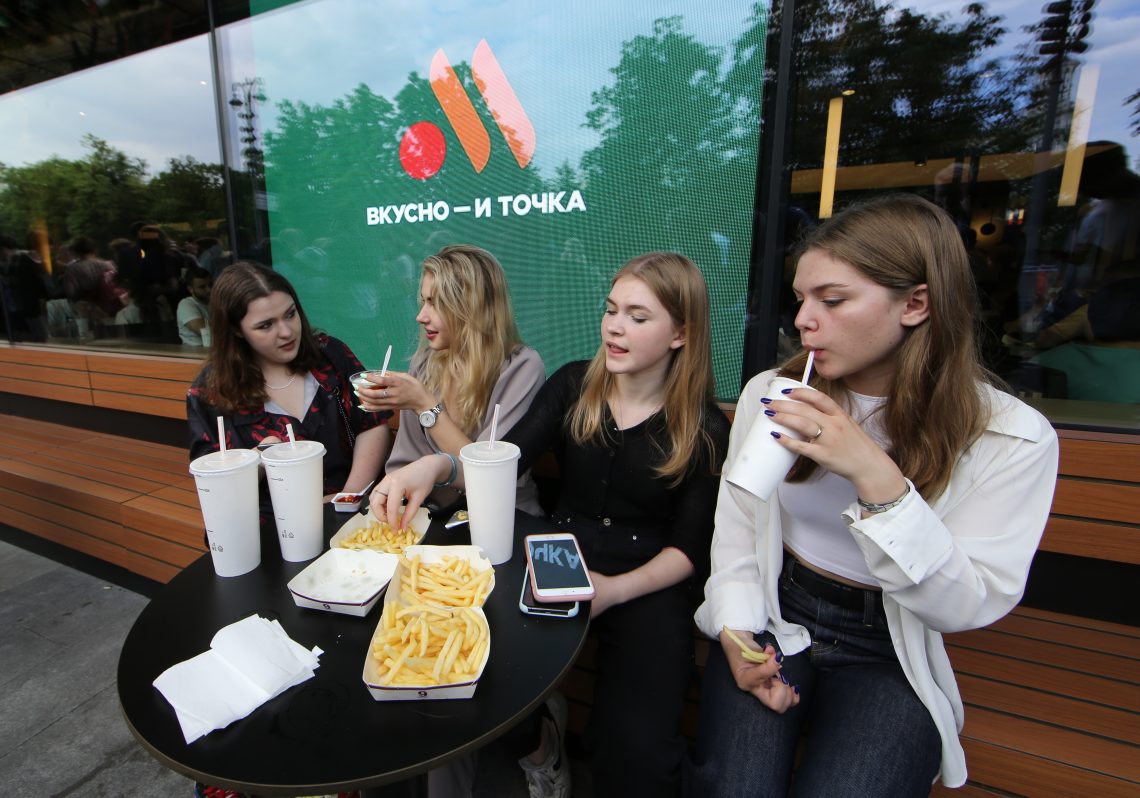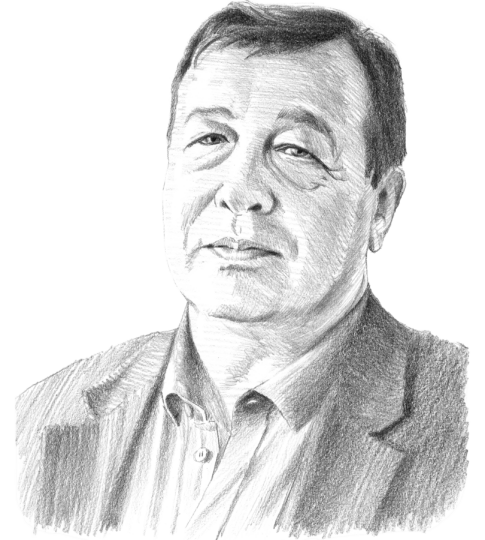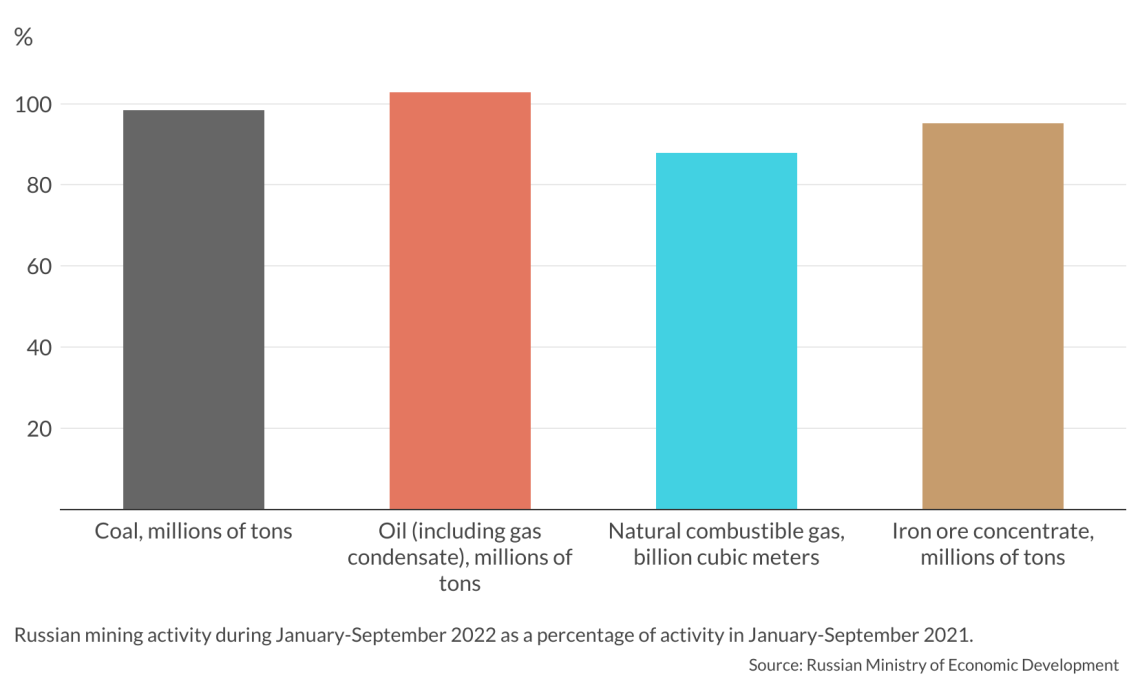The Russian economy mobilizes for war
While Western sanctions have not yet left Russia financially crippled, Moscow’s stepped-up war effort is still reshaping the economy.

In a nutshell
- Russia’s economy has not been decimated by Western sanctions
- Yet military mobilization is having major economic consequences
- The Kremlin’s war effort will require even more resources
Over the nearly 10 months of Russia’s war with Ukraine, many institutions within the Russian economy have significantly changed. Back in April 2022, the chair of the Central Bank of Russia, Elvira Nabiullina, warned that a “structural transformation” of the economy would begin in the third quarter of this year. What has really happened?
In the first half of 2022, Russia’s gross domestic product (GDP) was down only 0.4 percent compared to the first half of last year, according to official data. As for the industrial production index, in September 2022 it decreased by 3.1 percent compared to the year prior. These figures do not look like the crisis that was widely predicted after the West introduced tough sanctions restricting Russian exports of oil, gas, coal, metals and wood, and imports of many types of goods and services.
After the start of the war in February, over a third of the largest global foreign companies restricted their activities in the Russian market, with 15 percent announcing their departure from Russia and the transfer of local divisions. The largest foreign companies operating in Russia have lost $200-240 billion since the end of February 2022.
Why has Russia’s economy not yet collapsed? One reason is that mining activity has remained at nearly preexisting levels.
Facts & figures
In other areas of the Russian economy, a catastrophic drop was recorded only in the auto sector, where the production of cars almost halved between January-September 2021 and January-September 2022. The stability of the Russian economy so far owes much to the delayed effects of sanctions, the most painful of which will fully take effect in the fourth quarter of 2022 and early 2023.
Higher gear
But what about the “structural transformation” of the economy, foreshadowed by the top Russian central banker?
An important stage in the transition of Russia’s economy was its shift to military mobilization. The Russian leadership has faced a shortage of manpower at the Ukrainian front, while Kyiv’s forces have been bolstered by the supply of Western military equipment. This led to the loss of Russia’s strategic initiative and the beginning of a counteroffensive by the Ukrainian military. In September, the Kremlin responded with several radical decisions that are directly related to the state of the economy.
With the present military call-up, the Russian economy has become even more archaic and primitive.
First, on September 21, a “partial mobilization” was announced by decree of Russian President Vladimir Putin. Defense Minister Sergei Shoigu gave a target figure of about 300,000 recruits; by the end of October, according to official data, this goal was achieved. Citizens drafted into the army were generally part of the workforce, including those with high-performing roles, such as business owners. The officially announced average age of conscripts – 35 years – supports this observation.
In addition, another 700,000 people left Russia after September 21, including a significant number seeking to avoid conscription. Notably, throughout 2022, 31 percent of Russian information technology specialists had already moved to another country or were planning to relocate within the next year, according to Ventra Survey conducted in early September. The company notes that since the partial mobilization was announced in Russia, that figure has only increased.
Mobilization may cause an additional decline of 0.5 percentage points to Russia’s economy, thanks to a slowdown in the IT industry and related areas, as well as in small- and medium-sized businesses. With the present military call-up, the Russian economy has become even more archaic and primitive.
Direct control
An important marker of this evolution was the organization of new institutions for public administration. On October 21, President Putin created a new military council whose stated purpose is to strengthen “coordination of the activities of federal executive authorities and executive authorities of the subjects of the Russian Federation during a special military operation.” Headed by Prime Minister Mikhail Mishustin, the body should in practice ensure increased production of everything necessary for the Russian army, from weapons to military uniforms. To do this, orders for specific enterprises and their budget financing will be managed directly, at the level of government leaders.
For this purpose, the government approved new labor regulations in the military-industrial complex. In particular, employees of these organizations may be called in to work from vacation without their permission or be tasked with overtime work. Back in the summer, elements of defense industry factories were transferred to round-the-clock shifts.
The economic situation may also be affected by the “medium-level response” regime introduced by President Putin on October 19 in the Russian regions bordering Ukraine in Russia. It involves “carrying out mobilization measures in the economic sphere” to “meet the needs of the Armed Forces of the Russian Federation, other troops, military formations, bodies and the needs of the population.”
These include the introduction of a special mode of operation for transport, communications and energy, and the temporary relocation of residents to other areas. In the rest of Russia, “high” and “basic” readiness regimes are being introduced, which authorize the government to implement several “special” measures. Such regimes clearly create additional risks and uncertainty for entrepreneurial activity.

Another step toward the mobilization of the economy is the transfer of privately-owned assets to state control. On May 24, the State Duma adopted a draft law “on the external administration of organizational management.” This document provides for the external management of foreign companies that have announced their withdrawal from the Russian market. Covered companies are those who decided to withdraw from the Russian market without obvious economic reasons, “based on anti-Russian sentiments in Europe and the United States, while their activities significantly affected the stability of the economy.” Decisions on such companies will be made by a commission under the Ministry of Economic Development of Russia on proposals by other ministries and heads of regions.
Finally, in the draft federal budget for 2023, which has already been adopted, a record 23 percent of expenditures are secret items. Compared to 2022, these costs have nearly doubled.
Scenarios
How will the situation develop further? If the “hot” phase of the conflict continues until the end of 2022 and beyond, the mobilization of the Russian economy will become even clearer. The Kremlin will require a greater concentration of resources for military purposes, even as the sources of revenue become more limited. This dynamic can further accelerate the formation of a mobilization model of the Russian economy.
If the most intense phase of the conflict ends in the near future, much will depend on the conditions of such a turning point. In the case of some long-term peace between Russia and Ukraine with international guarantees (which remains unlikely), there would be an opportunity for the gradual abolition of the movement toward an economic mobilization. But this scenario can become a reality only with radical changes in Russia’s political life and domestic policy.









